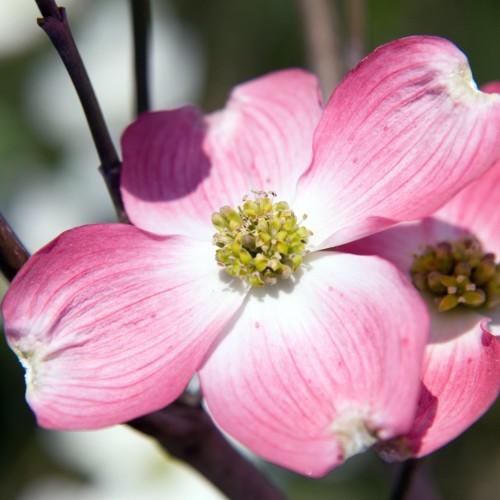
flowering dogwood
Cornus florida f. rubra
Cycle:
Perennial
Watering:
Average
Hardiness Zone:
6
Flowers:
Flowers In Spring
Sun:
Full sun, Part sun/part shade
Soil:
Acidic, Well-drained
Fruits:
Fruits In Autumn Ready In Fall
Leaf:
Yes
Growth Rate:
Moderate
Maintenance:
Moderate
Care Level:
Medium
watering
Watering flowering dogwood (Cornus florida f. rubra) should be done at least once a week, and more often during extremely hot weather. When watering, soak the soil thoroughly so the water reaches the roots. If water pools in the saucer beneath the pot, empty it immediately as the plant is susceptible to root rot. After a few weeks, the plant should become acclimated to its new environment, and you can reduce the frequency of watering. During winter months when the tree is dormant, reduce the amount of water to once a month or less.
sunlight
Flowering dogwood (Cornus florida f. rubra) preferslight to partial shade and tolerates full sun in climates with cooler summers. Ideally, this plant species should receive at least 3-4 hours of direct sunlight daily or 4-5 hours of indirect sunlight. Of important note, however, are the hours of direct sunlight the plant is exposed to on a daily basis, not simply the total amount of sunlight or the amount of diffused light throughout the day. In the mornings, the sun is more powerful and direct; in contrast, in the late afternoon and early evening, the sun is less direct and more diffuse. Thus, it is recommended that this plant species receive more direct sunlight in the mornings and less in the afternoon.
pruning
Flowering dogwood (Cornus florida f. rubra) should be pruned in either early spring before flowering or in late winter when the plant is dormant. Pruning should be minimal, as too much can remove potential flower buds and ruin the shape of the tree. Start by removing any dead or broken branches, then selectively prune to maintain form, removing any crossing branches that reduce air circulation. Prune any stems that are rubbing against 1 another as well. Remove any suckers rising from the base of the trunk and thin out branches that are too close together by cutting back to the main branch. If you’d like to reduce the size of the tree, make sure to cut back only a small amount at a time, otherwise you’ll compromise the overall structure of the tree.
